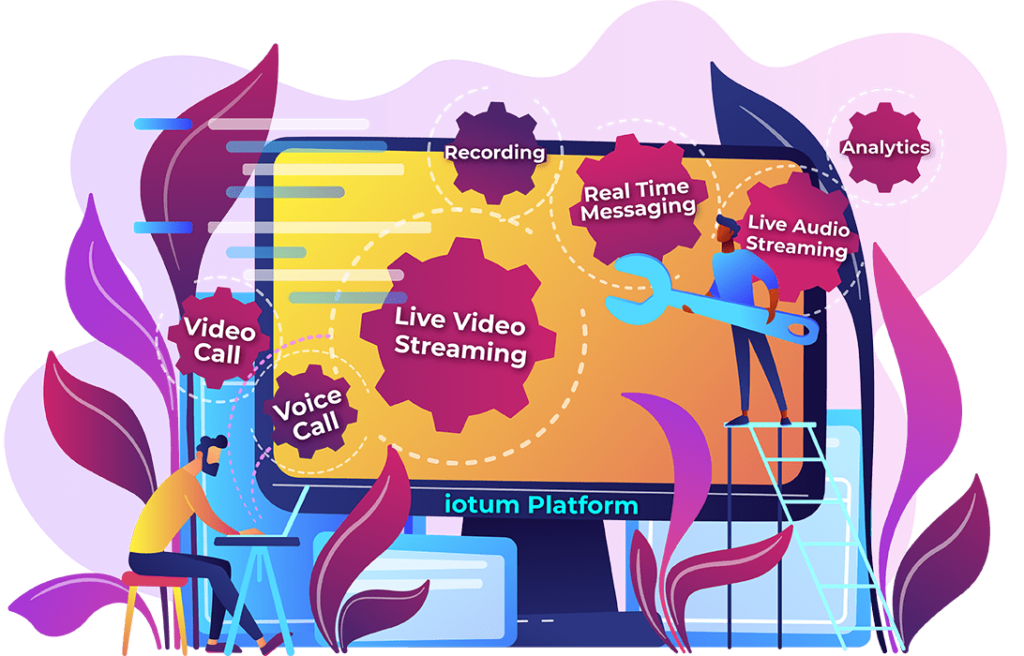 In and out of the classroom, video conferencing has the capability to enhance a student’s academic experience. Not only does video conferencing for college students enrich their experience with a more digital-centric approach, but it can also work to give them more well-rounded education that’s geographically independent.
In and out of the classroom, video conferencing has the capability to enhance a student’s academic experience. Not only does video conferencing for college students enrich their experience with a more digital-centric approach, but it can also work to give them more well-rounded education that’s geographically independent.
Plus, video conferencing for colleges has its perks for other parts of the higher education process like student enrollment, further counseling with campus counselors or TAs, enhanced studying with groups, etc.
What’s even better is that there are free video conferencing options available, which means both students and educational institutions can save money without sacrificing learning.
Let’s get a closer look
How does video conferencing enhance student life?
 Video conferencing for colleges online affects student success. With an already full workload balancing life and classes, video conferencing software makes it easier to get course material, stay in contact with peers and professors, and so much more:
Video conferencing for colleges online affects student success. With an already full workload balancing life and classes, video conferencing software makes it easier to get course material, stay in contact with peers and professors, and so much more:
- Enrollment Opportunities
For overseas students, touching base with their school of choice can be a little daunting. Admissions consisting of proficiency tests, sending transcripts, and getting questions answered in a timely manner can be simplified with the use of video conferencing. Applicants can book one on one time or get interviews with the admissions office. Colleges can use chatbots and live chats with admission officers or student ambassadors. By optimizing virtual admissions tools, especially with a video conferencing app, available on Android and iPhone, colleges can really expand their reach to include anyone from anywhere. - Flexible Learning
When lectures are recorded or live streamed using video conferencing technology, suddenly, the content becomes more widely available. Even if a student was present, the recording can be watched again, and for those who are off-campus students or unable to physically attend, they can feel like they were actually there. Video conferencing affects attendance. Students who are sick can still “be present.” Professors who are working from home can still give a lecture that resonates. And for a substitute teacher? Professors can use video conferencing to brief the stand-in and pass on their lecture agenda and notes for a lesson that’s just as hard-hitting and effective. Using video conferencing to record lectures and classes introduces the next level of flexibility for both learners and educators.(alt-tag: Woman in wheelchair sitting at table at home in front of open laptop, smiling and waving and chatting online) - More Enhanced Offerings
Colleges need to remain in contact with applicants, current students, and alumni. What better way to do that than with video conferencing? Open up levels of engagement with video tools that streamline college transfers, support a mentorship program, offer full-time/part-time/continuing education classes, promote online visits, showcase campus life, provide career counseling and so much more! - Higher Levels Of Collaboration
A student’s schedule is jam-packed but video conferencing is an option that gives them the tools they need for success. When coordinating everyone’s time constraints in a group project or when catering to mature students who live and work abroad supporting a family; Web conferencing with video, conferencing calling, and a suite of features such as Screen Sharing, Document Sharing, and an Online Whiteboard truly make a difference when you’re showing up in a virtual setting. Video opens schedules, promotes collaborative learning online, (with text chat, transcriptions, and summaries, file sharing, etc), and overall lessens the gap between how the course material is sent and received. Video conferencing in the classroom or wherever a student may roam offers a more enriched education that benefits how colleges can reach out to potential and current students.
Make Learning More Engaging
With the best free video conferencing app, students will naturally feel more engaged. Ensure there is a constant feedback loop with web conferencing techniques that help more than hinder:
Try Recording Lessons
Record now, watch later for full lessons whether students attended or not. If details were missed or context was missing, a video will iron out the details and provide the full picture
Encourage At-Home Presentations
For off-campus or international students, this is a great solution to still feel included and gain critical presentation skills.
Feature Experts In The Field
Use video as a way for experts to “drop-in” and share insights, add to the lecture, and get the college or institution recognized.
(alt-tag: Clear view of professor teaching in the background with a row of blurry backs of heads of students in foreground learning)
A Video Conferencing Solution Must Be Compatible
 Students and educators are expected to juggle a heavy course load, full of different ongoing projects. The best free video conferencing solutions should have some level of interoperability meaning the software is able to coexist with other devices, for a seamless connection with other online tools such as project management tools, the college’s proprietary software, email, and more.
Students and educators are expected to juggle a heavy course load, full of different ongoing projects. The best free video conferencing solutions should have some level of interoperability meaning the software is able to coexist with other devices, for a seamless connection with other online tools such as project management tools, the college’s proprietary software, email, and more.
FreeConference.com is the best video conferencing app for colleges to drive forward a healthy and thriving learning environment. Enrich a student’s life and makes a teacher’s job run more smoothly with features like the Online Whiteboard and Free Screen Sharing.
You can expect a more educational experience all around with FreeConference.com, the best video conferencing solution – for free!


